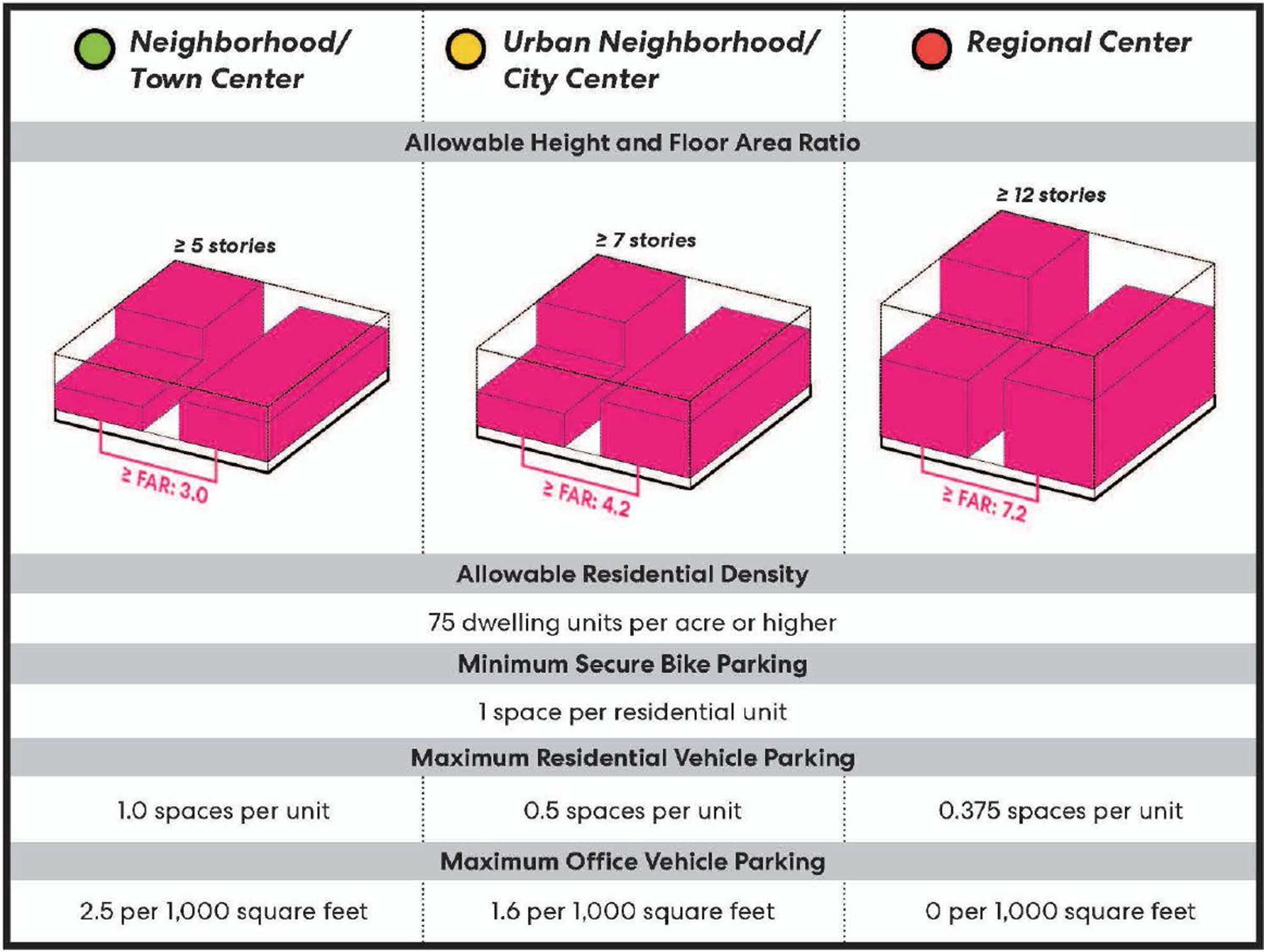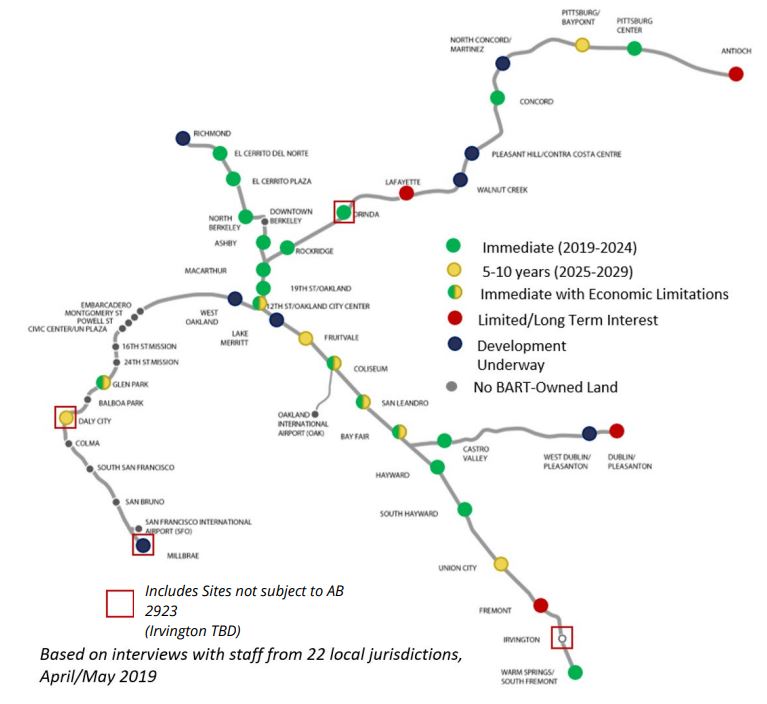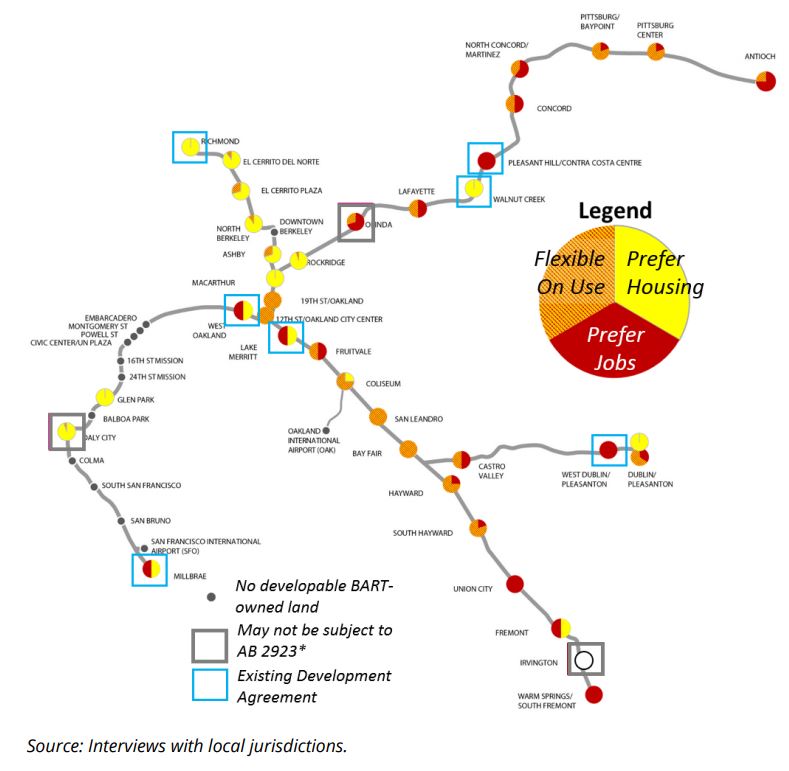By Sajuti Rahman, associate editor, Northern News, February 20, 2020
BART, primarily a transportation agency, is making critical decisions about housing in the Bay Area. Its efforts reinforce the ties between housing and transportation and the need to think creatively on how to address the shared challenge of housing. Since BART owns 250 acres of strategically developable land, recent legislation could have a significant impact on the housing landscape in Alameda, Contra Costa, and San Francisco counties.
On February 18, 2020, BART released outlines of its AB 2923 Guidance Document and 10-Year Work Plan for Transit-Oriented Development (TOD). As explained on the BART website, AB 2923 requires BART to set TOD zoning standards and a development streamlining process for agency-owned properties within one-half mile of BART stations. Specifically, the bill in part reads:
“[B]oard of directors shall adopt transit-oriented development (TOD) zoning standards by a majority vote at a duly noticed public meeting that establish minimum local zoning requirements for BART-owned land that is located on contiguous parcels larger than 0.25 acres, within one-half mile of an existing or planned BART station entrance, in areas having representation on the BART Board of Directors.”
Since the Bill was signed into law, BART staff has been working with affected local jurisdictions to establish an implementation plan, including the AB 2923 Guidance Document and 10-Year TOD Work Plan. To help develop outlines for the guide and the plan, BART staff reached out to the public, local elected officials and staff, regional advocates, community groups, developers, and BART Board and Committees via meetings, work sessions, email updates, presentations, webinars, and case studies. According to BART, “the guidance document will offer greater clarity around certain bill provisions” and the work plan will provide “transparency about how and when BART will develop its property with housing or commercial uses.”
AB 2923 Guidance Document Outline
This document outlines the upcoming AB 2923 Guidance Document that will set the framework for implementation. The Guidance Document will provide jurisdictions with greater clarity regarding how BART will ensure that local zoning conforms to the TOD zoning standards. The outline states: “BART’s determination of conformance for each station area will focus exclusively on the four zoning parameters defined in the law: residential density, building height, Floor-Area Ratio (FAR), and parking.”
Based on a June 2019 Board decision, the May 2017 TOD guidelines will become TOD zoning standards on July 1, 2020 (see figure 1). The 2017 guidelines state that, unless local jurisdictions rezone by June 30, 2022, zoning defaults to BART’s TOD zoning standards. BART will determine the conformance with zoning standards.

10-Year Work Plan Outline
Whereas the AB 2923 Guidance Document focuses on zoning, the 10-Year Work Plan focuses on when and how BART will advance TODs. The outline for the work plan provides a “summary of BART’s internal TOD Program functions and current capacity, a description of BART’s proposed process to prioritize development on properties at its stations, and preliminary recommendations on how BART’s TOD Program can respond to the new requirements in AB 2923.”
BART developed a four-step TOD Process, which includes: (1) pre-development solicitation, (2) developer solicitation/selection, (3) project refinement/developer agreement, and (4) permitting and construction. The work plan focuses mainly on four phases of the prioritization process for advancing development:
Phase 1, Performance evaluation: BART’s TOD program is on track toward a 2025 goal of 1 million sq. ft. of commercial projects, with 2.9 million sq. ft. in the pipeline. The residential pipeline is 774 units short of the 2025 goal of 7,000 units, with the largest shortfall occurring in affordable housing production.
Phase 2, Clarify development opportunities: BART is also (a) evaluating the suitability of its properties (developable vs. undevelopable); (b) articulating expectations by stations for parking replacement, job-generating uses, and affordable housing; and (c) evaluating staff capacity to initiate the new projects. This phase assesses local interest in the development of BART properties (figure 2) and local preference (housing or jobs) for BART development (figure 3).


Phase 3, Prioritize sites for new TOD projects, and Phase 4, Next steps for short-term priorities: BART plans to prioritize stations through a screening process that assesses development readiness, local support, and implementation barriers and opportunities. Then BART plans to evaluate how the priority sites address the TOD targets for ridership and revenue goals.
Early Findings
BART has been working closely with local jurisdictions to understand how AB 2923 will affect the TOD Program. Although BART’s analyses and community engagement are continuing, they have listed these preliminary findings in the plan outline draft (pp. 14-19):
- “The majority of local jurisdictions affected by AB 2923 are supportive of some type of development occurring on BART-owned property in their communities.
- “Some of the greatest perceived barriers to development of BART property are: (a) the need for parking replacement, (b) the desire for land uses and/or density that may not be market-feasible today, (c) escalating construction costs, and (d) insufficient subsidies for affordable housing.
- “Consistent with BART’s Board-adopted TOD policy, BART will continue to only work with jurisdictions that are supportive of TOD.
- “For many communities, the height and FAR requirements of AB 2923 are in excess of what can be built by the market today.
- “Due to the zoning standard requirements of AB 2923, it will be more important than ever for BART to collaborate closely with local jurisdictions on project design elements.”
What’s Next?
According to BART, “Studies show that developing housing and jobs near transit stations results in an increase in transit ridership, a decrease in driving, and an increase in active transportation, which [in turn] result in better safety, environmental, health, and economic benefits.” As BART continues its community outreach to finalize the AB 2923 Guidance Document and 10-Year Work Plan, planners, city officials, and community members in the impacted jurisdictions should be ready to discuss the Parking Replacement Policy, Transportation Demand Management Policy, and Anti-Displacement Strategy in 2020.

